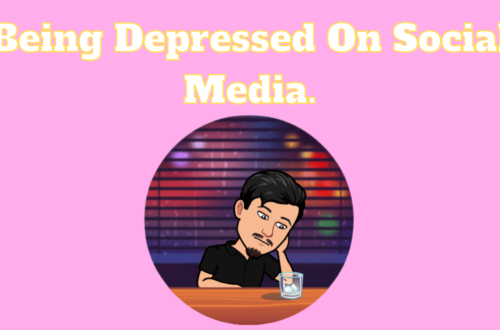
Duality of News Channels in India.
News channels are television channels devoted exclusively to delivering news continuously, without pause throughout the day. India has 392 news channels, of different regional channels and private network channels. The Indian media is diverse, with thousands of outlets controlled by large, for-profit corporations and private companies.
What is the Duality of News Channels in India?
News channels are the source of medium ordinary people depend on to find out what’s going on around them. Often, we see that news channels fabricate news, edit and post it so that ordinary people lose sight of the truth and damage the object’s reputation in the report. The nature of news channels showing contrasting sides of the same thing is called the duality of news channels in India.
Dependency on News channels
Despite digital media’s growing popularity, television media is the most preferred medium for news by the people of our country. The dualism of media through models like 24×7 news, breaking news, debates and exclusives keeps the audience engaged. These models also distort the truth and sensationalising information instead of showing it as clear as black and white. In the olden times, people depended only on one trusted news channel suitable for them. The channels used to state the facts instead of throwing a shade at them. These days, news channels structure a piece of news into something else and deliver it from their perception. It leads to people switching between news channels to know the truth, making them depend on more than one news channel to keep guessing what the fact is.
The Necessity of Debates on News Channels
Regular live televised debates are often a common strategy to keep the audience engaged. The debates nowadays are on hot and trending topics rather than essential topics that are useful for the public, essentially a primary example of the dualism of media. Untrained for debate, journalists act as debate moderators. Both sides keep talking while losing control and arguing instead of debating. Journalists and news channels in India use this as a source to gain more TRPs. The result of the debate is never actually visible. Who wins the debate? It is a question to keep the audience tuned to their news channel. Even though the truth appears during these debates and facts are discussed, it’s overshadowed by exaggerating disrespectful comments toward one other.
The Dualism of Media – Trusted or Corrupt?
A common question GenZ and millennials keep wondering is how trusted is the source of the news channels in India. Or corrupt media is in India. If, say, there has been a political or government issue to be addressed immediately. The news channels would go to lengths to ensure the truth comes out. But this doesn’t last for a long time, as they are self-regulating and often have strong political affiliations and corporate ownerships. So, as soon as these news channels receive a word from their connections, they divert the news and cover the truth instead of showcasing it without swaying and becoming a part of corrupt media. In short, it doesn’t take a lot of time and effort to corrupt the news channels in India by swaying them away from the truth. Instead, they would cover it with a celebrity scandal and make it a trend rather than focusing on urgent issues. It essentially exposes the dualism of media.
TRP game of News Channel in India.
Television Rating Points (TRPs) are crucial for a news channel to survive in a highly competitive market. Another example of the dualism of media is exclusive news and interviews. News channels depend on exclusive news, published first and foremost for high TRPs. They often go to lengths to get an exclusive without caring about a person’s privacy. Sometimes, these exclusives turn out to be the truth and help news channels gain TRPs through an honest narrative. Sometimes, they fabricate and edit it short of creating an exclusive out of nothing and gain high TRPs. Without caring about how their exclusive news can hurt someone and corrupt media wins over trusted one’s media.
Last year, the Broadcast Audience Research Council (BARC) scrutinized the TRPs of channels. It accused Republic TV and two Marathi entertainment channels of tampering with metering devices of some households to boost their ratings. These news channels continue to operate and enjoy massive popularity because of their online and offline platforms.
Usage of Technology and social media by News Channels in India
There are approximately a 600million active internet users in India. 73% of users access news through smartphones in India. And 37% through computers. Platforms like WhatsApp, YouTube and Facebook are being used to spread misinformation and hate speech in India. News channels tend to quickly cash this, making ‘Breaking news’ instead of fact-checking. The same news channels also state that a piece of given news is fake and circulated among social-media groups. And warn the people to be aware of fake news in differently televised programs.
Fundamental Principles of news
Due to increased unregulated content online, independent fact-checking organizations and dedicated fact-checking and debunking teams in mainstream media organizations have grown. New guidelines are issued to trace the origin of misleading information to limit false and objectionable information on social media platforms. Authorities have asked platform companies to block posts from activists, journalists, and opposition parties. These rules are against the ‘fundamental principles of news’, independence of spirit and mind. With control given to the government to remove news content online, India has now occupied 142nd position out of 180 countries. Freedom House changed India’s status from ‘free’ to a ‘partly free’ country last year.
With one side forming fact-checking teams and the other side facing threats by the public and the government, news channels in India are between a rock and a hard place. Media now acts as both Trusted Media as well as Corrupt Media.
As the mainstream news channels have two faces, the case with social media is the same. Check out the duality of social media.


You May Also Like

Books to Get Out from a Reading Slump.
October 5, 2021
Being Depressed On Social Media.
July 2, 2022